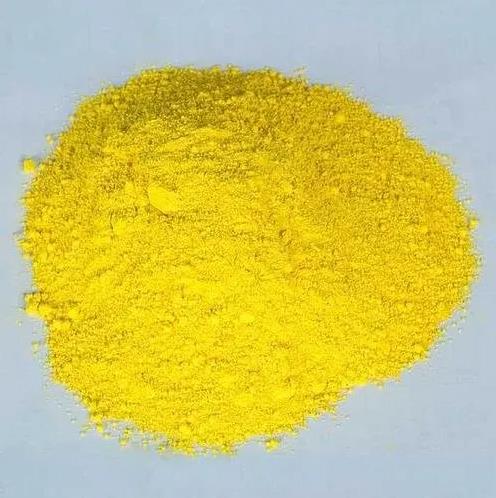Property and Formula Recommendation of Trimethylolpropane tris(2-methyl-1-aziridinepropionate)
Nov 17,2025
Trimethylolpropane tris(2-methyl-1-aziridinepropionate) is a multifunctional crosslinking agent supplied at 100% active content. When incorporated at levels of 1-3% into aqueous acrylic emulsions or polyurethane dispersions, it induces significant enhancements in the performance properties of the resulting films, including markedly improved resistance to water and chemicals, superior tolerance to elevated temperatures, and strengthened adhesion on challenging substrates. Although this polyaziridine crosslinker is designed to undergo efficient crosslinking at ambient temperature, Trimethylolpropane tris(2-methyl-1-aziridinepropionate) is also fully compatible with and recommended for application processes involving warm spray techniques or elevated-temperature baking/curing cycles.

Figure1 Picture of Trimethylolpropane tris(2-methyl-1-aziridinepropionate)
Property
Trimethylolpropane tris(2-methyl-1-aziridinepropionate) represents a specialized class of chemical compounds that efficiently react with carboxylic acid groups to form crosslinked networks, extensively serving as a crosslinking agent, adhesion promoter, and system modifier, while polyfunctional aziridine compounds are typically employed for crosslinking acrylic emulsions and polyurethane dispersions as well as non-aqueous resin systems. **Trimethylolpropane tris(2-methyl-1-aziridinepropionate)** significantly enhances the end-use properties of adhesives, coatings, and printing inks by effectively improving film strength, flexibility, solvent resistance, water resistance, hardness, and substrate adhesion, with its primary applications encompassing: elevated water, wash, chemical, and high-temperature resistance for leather coatings; enhanced water resistance, anti-blocking, and heat tolerance for aqueous printing coatings; improved water and detergent fastness for water-based inks; superior resistance to water, ethanol, detergents, chemicals, and abrasion in aqueous wood floor lacquers; increased water resistance, alcohol resistance, and anti-adhesion properties in waterborne industrial paints; reduced plasticizer migration and enhanced stain resistance in vinyl coatings; improved wear resistance for aqueous concrete sealants; and universally strengthened adhesion of water-based systems on non-porous substrates.
Formula Recommendation
Trimethylolpropane tris(2-methyl-1-aziridinepropionate) is a trifunctional crosslinking agent designed to react with carboxylic acid groups present in polymers, possessing an equivalent weight of 166. While optimal performance enhancement is typically achieved at a ratio of 0.6 equivalents of this crosslinker per equivalent of carboxylic acid functionality, certain demanding formulations may require a stoichiometric equivalent of the crosslinker for a complete reaction. In practical application terms, fully crosslinking a standard acrylic or polyurethane dispersion generally necessitates the addition of this agent at a concentration of 2% to 3% by weight. It is critical to incorporate Trimethylolpropane tris(2-methyl-1-aziridinepropionate) into the clearcoat, coating, or ink formulation immediately prior to its application. Due to its excellent miscibility, simple manual stirring is often sufficient for adequate mixing; however, a recommended best practice is to first pre-dilute the crosslinker with an equal part by weight of water before introducing it into the main system to ensure perfectly uniform distribution.
Application
Trimethylolpropane tris(2-methyl-1-aziridinepropionate) significantly enhances the performance of leather coatings by improving their resistance to water, washing, chemicals, and high temperatures, while in aqueous wood floor varnishes, plastic paints, and metal coatings, it upgrades resistance to water, alcohol, detergents, chemicals, and abrasion. Furthermore, Trimethylolpropane tris(2-methyl-1-aziridinepropionate) universally improves the adhesion of aqueous systems on non-porous substrates and finds broad applicability by reducing plasticizer migration in vinyl coatings, increasing stain resistance, improving abrasion resistance in aqueous concrete sealers, enhancing the water and wash fastness of aqueous printing inks, upgrading the solvent resistance of solvent-based polymers, suiting polyester-cotton blends and fiber dyeing processes, and boosting the water resistance, block resistance, and heat tolerance of aqueous printing coatings.
Academic Research
Researchers prepared a UV and aziridine dual-cured waterborne polyurethane acrylate (UV/AZ-WPUA) emulsion in which the carboxylic groups can be crosslinked by the trifunctional aziridine crosslinking agent trimethylolpropane tris(2-methyl-1-aziridinepropionate) (Sac-100), and investigated the effects of Sac-100 content on the gel fraction, tensile properties, hardness, wear resistance, water resistance, and surface morphology of the cured films and coatings, with results demonstrating that as the Sac-100 content increases, the gel fraction, tensile strength, elongation at break, and toughness of the films initially increase and subsequently decrease while the wear weight loss and water absorption ratio gradually decrease, in addition to Sac-100 affecting the surface roughness of the coatings.[1]
Reference
[1] Oh D, Park J, Song Y K, et al. Crosslinking characteristics of aziridine crosslinkers in polyurethane-based clearcoats for automotive applications[J]. Journal of Coatings Technology and Research, 2024, 21:1893-1906.
- Related articles
- Related Qustion
4,4'-Bis(diethylamino)benzophenone has been successfully screened and optimized as a new MALDI matrix, of which relevant research results will be reported.....
Nov 17,2025Organic Synthesis IntermediateYou may like
Trimethylolpropane tris(2-methyl-1-aziridinepropionate) manufacturers
- Trimethylolpropane tris(2-methyl-1-aziridinepropionate)
-

- 2025-11-17
- CAS:64265-57-2
- Min. Order:
- Purity: 0.99
- Supply Ability:
- Trimethylolpropane tris(2-methyl-1-aziridinepropionate)
-

- $0.00 / 1kg
- 2025-11-17
- CAS:64265-57-2
- Min. Order: 1kg
- Purity: 99%min
- Supply Ability: 20tons
- Trimethylolpropane tris(2-methyl-1-aziridinepropionate)
-

- $10.00 / 25kg
- 2025-11-14
- CAS:64265-57-2
- Min. Order: 1kg
- Purity: 99.5%
- Supply Ability: 100





